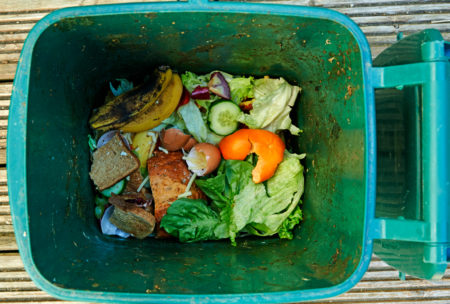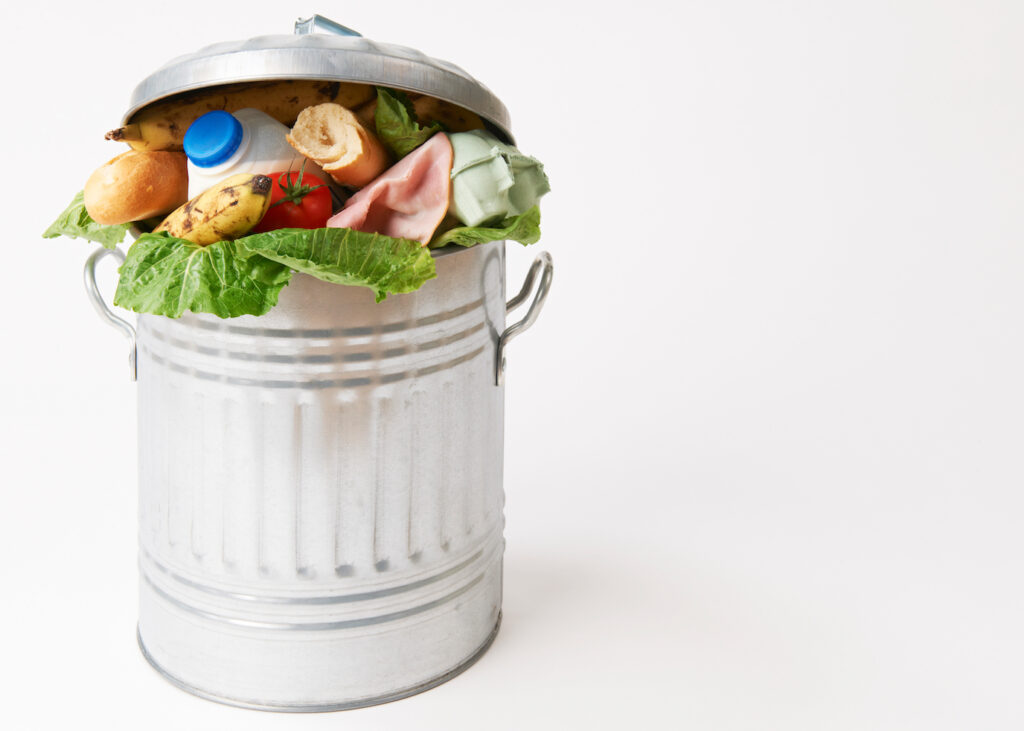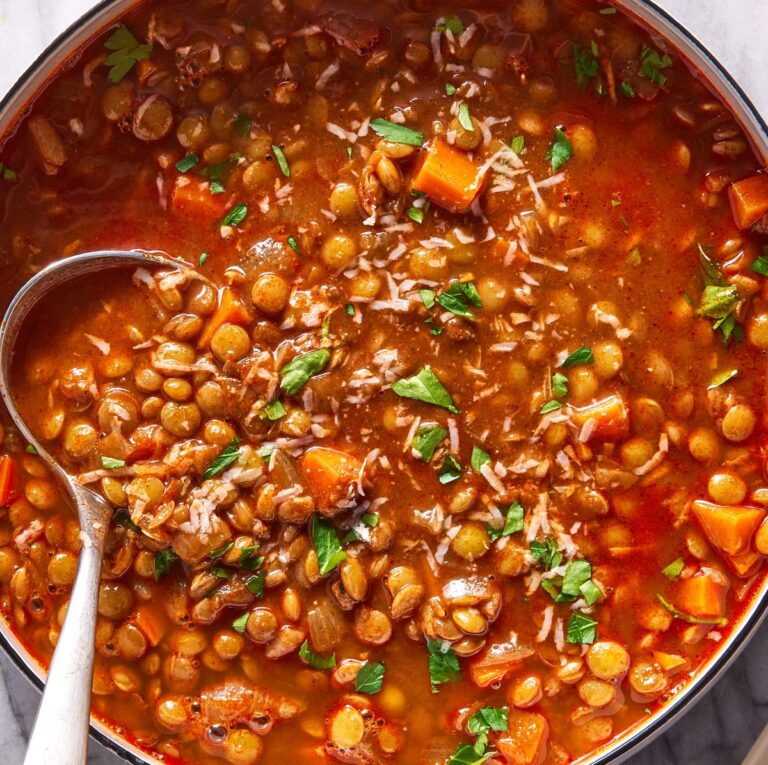Tired of tossing out half eaten packages of vegetables or meat? Today’s blog post will investigate what food waste is, what causes food waste, impacts on the environment and economics, and ways you can reduce food waste in your own home and your community. Buckle up, some of these statistics might come as a shock!
What is Food Waste?
Food waste is considered any food that was intended for human consumption that was not consumed. This can occur anytime between being farmed to having it in your house. In the United States, it’s estimated that between 30% and 40% of food is wasted. This equates to approximately 119 BILLION pounds of food, costing over $400 billion. It is estimated that 39% of this food waste occurs in homes while the remaining 61% occurs commercially between farms to stores to restaurants. You may also see these numbers separated with the in-house and retail waste referred to as “food waste” and all losses before then (farm to distribution) referred to as “food loss”. Although these numbers are for the United States, it’s not the only country that struggles with high food waste numbers. Across the globe, 33% of food is wasted.

What Causes Food Waste?
As we just learned, food waste can occur at any stage in the food process from farm to table and anywhere between. Let’s take a look at some common ways food waste can take place.
- Spoilage – food rotting or “going bad”, and can happen at any stage in the food process
- Improper food storage
- Low crop prices – sometimes prices may be too low to harvest foods (when it costs more to harvest the food than the food is worth)
- Issues during manufacturing – contamination, spoilage, etc
- Food doesn’t meet expectations – at the retail stage, if food doesn’t meet the right appearance (bruising, color variations, etc.) it will not be put out to sell
- Food thrown out at home and restaurants (half eaten, past best buy date, etc.)
Since most of us only have an impact on what happens in our homes and not what happens during the entire rest of the food supply chain, let’s look at a few ways food can be wasted at home.
- You simply forgot. It happens to all of us. You had the intention to make a meal, add the ingredients to your grocery list, buy them, stick them in the fridge, and the next thing you know you find the produce slimy and maybe even moldy. To the trash can it goes.
- You bought it but didn’t have a plan to use it. It is easy to let produce or meat go bad when you don’t buy it with a plan in mind. You keep saying “oh I need to use that before it goes bad, maybe I’ll use it tomorrow.” Eventually, procrastination catches up to you and it’s too late; the food is no longer safe to consume.
- You used part of the package but have no plans to use the remainder. It’s rare that you can buy items in the exact amounts needed for a recipe. This can happen with fresh, frozen, and canned items.
If you feel like your household wastes too much food, don’t get down on yourself! No household is perfect and you’re still reading this post for a reason! Continue reading for ways you can reduce food waste at home.
The Impact of Food Waste
The biggest impact an individual likely feels from food waste is often monetary. It’s no secret that food costs have increased in recent years and many households across the country are feeling this impact. As you learn to use your food more efficiently, you will see your grocery and restaurant bills decrease week by week.
In the United States, 95% of food that goes to waste ends up in landfills. This makes up the largest percentage of landfill waste at 21%, meaning that over 20% of everything we throw out is food. As we looked at earlier, this food waste costs over $400 billion each year.
How Can You Help?
There are large projects such as Feeding America that work to reduce food waste from farm to retail, but what can you do at home? Below is a list of ways you can reduce your family’s food waste.
- Pre-plan meals and use this meal list to make a grocery shopping list. This way you know what you need and how much of it is called for.
- Choose the best-looking produce if you’re going to wait a while to use it. For packaged items, look at the best before date and see if there are ones on the shelves that expire later than others. Choose those. This will help ensure that it is still good when you’re ready to cook.
- Choose the ugly produce if you’re going to use it right away. Ugly or imperfect produce is more likely to be tossed out as many people won’t want to buy it. But if you are going to use an item in the next day or so, it doesn’t need to be less ripe to last a longer time. Some stores even sell this “ugly” produce at a reduced rate in an effort to reduce food waste.
- Buy canned, frozen, or dehydrated if needed. If you’re not sure you will use an item by the time it goes bad, buy it in a preserved form instead. It’s also nice to have these items on hand in case of an emergency (like a snow storm or a last-minute meal). Sometimes, you may just prefer canned vs fresh vs frozen! These items can be safely stored for a much longer duration compared to fresh products.
- Preserve your extras. If you bought a bag of potatoes but only used half and have no plans for the rest, try freezing, drying, or canning the leftovers! Just be sure to do your research so you’re able to ensure food safety. This can help with saving money too. Buy items on sale and preserve them to use later.
- Remove spoiled items as soon as you notice them, especially if it is in a package with other items. For example, if one strawberry is going bad you should remove it or it will spoil the remainder of the package sooner.
- Wash your produce when you get home from the store. This will not only take one step out of the cooking/preparing process, but also remove any bacteria that may already be present.
- Learn how to store food properly. Some items do best in the fridge while others prefer the counter or dark cabinet.
- Use scraps and food waste as compost or animal feed. If this isn’t for you, see if anyone local can use them!
There are many other ways you can reduce your household food waste. Is there anything you already do? Let us know in the comments!

Hopefully you have a clearer idea of what food waste is, its impact on the environment and economy, and ways you can reduce food waste in your own household. Working with your dietitian to build meals around your budget can give you new ideas you may not have thought of before, while also decreasing your food waste and food costs. Reach out to our team of dietitians today for more ideas and be sure to bring your questions too!
Resources
https://www.usda.gov/foodwaste/faqs
https://www.hsph.harvard.edu/nutritionsource/sustainability/food-waste/food-waste-home/







